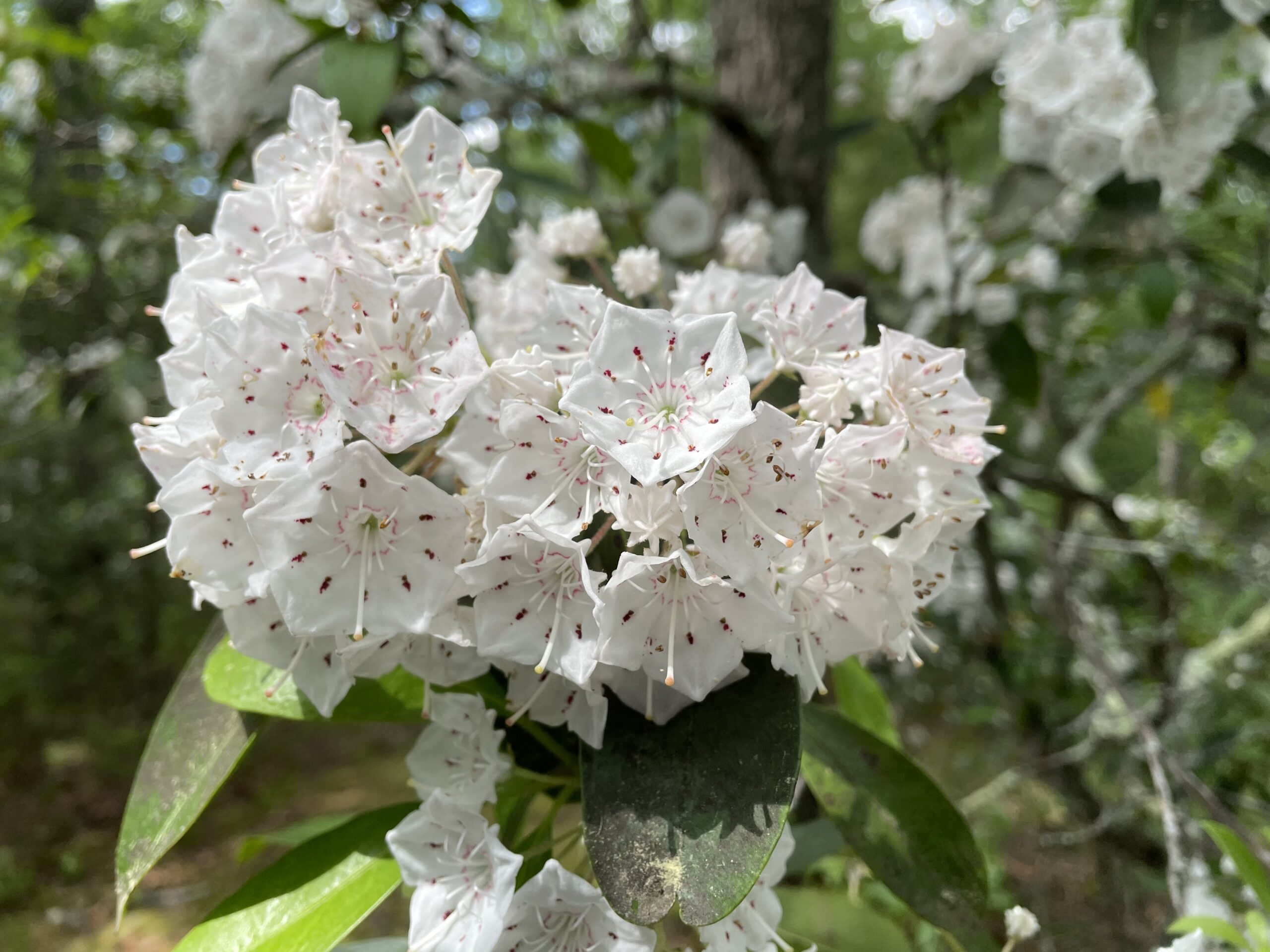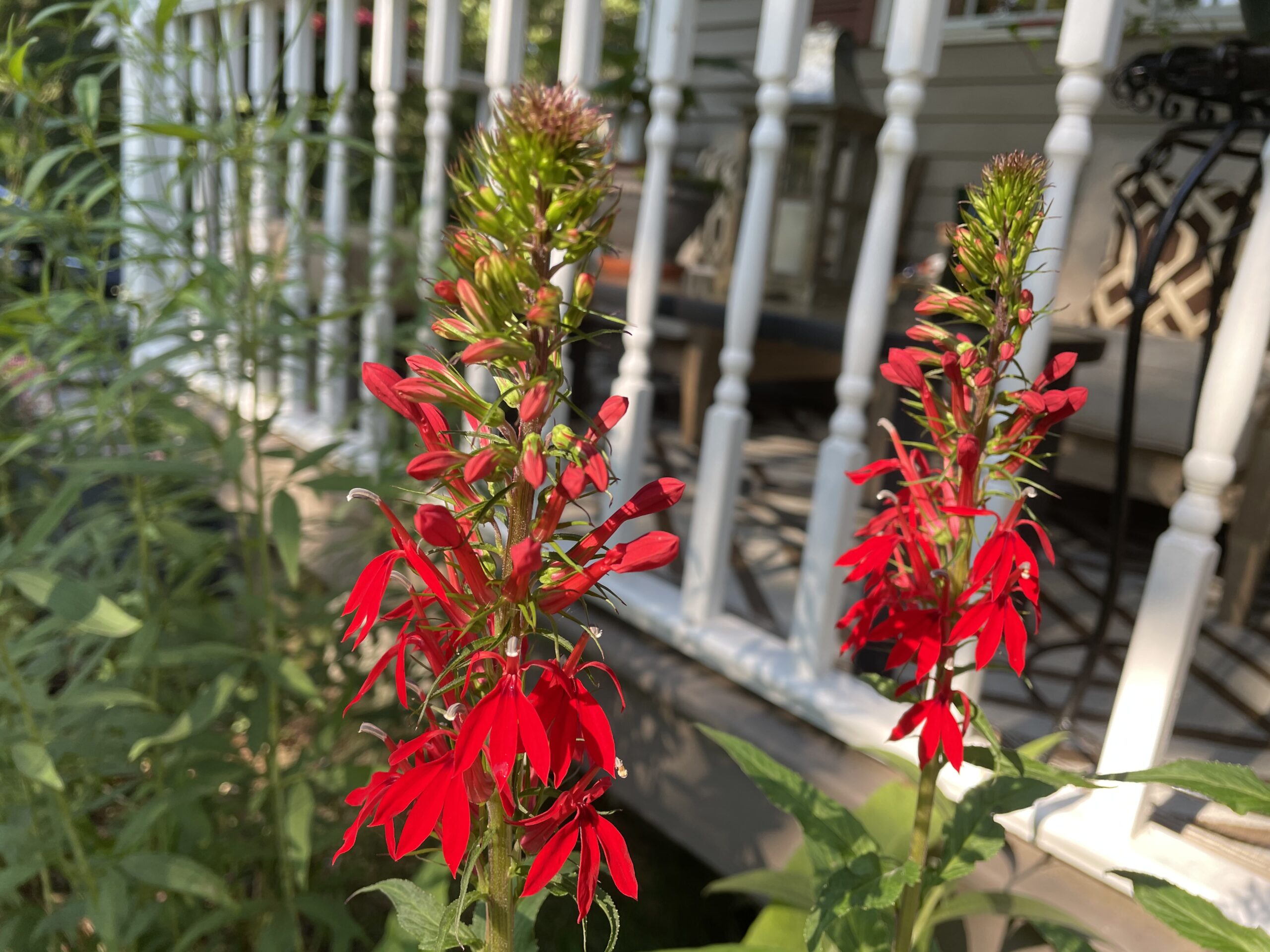NativePlants Gaining Popularity
By Cynthia Drummond / ecoRI News contributor
Astory
in a recent issue of a national gardening magazine extolled the benefits of
“naturalistic garden design,” a less constrained landscape that features native
plants grouped in ecologically compatible communities.
The
reader was encouraged to look for inspiration in the local ecosystem and to
“suspend fussiness” to develop a wilder, more resilient garden that is in tune
with the surrounding natural landscape.
Magazine
articles about native plants indicate their growing acceptance as garden
plants, but because they have co-evolved over thousands of years with native
insect and bird species, these plants play a much more critical role.
David
Gregg, director of the Rhode Island Natural History Survey, described native
plants as central components in the evolution of the Rhode Island ecosystem.
 |
| Mountain laurel is one of Rhode Island’s most abundant native shrubs. |
“They’re the environment and context in which all the other animals in our plants in our area evolved,” he said. “So, the bees’ tongues are the right length to get the nectar from the flowers. The birds can eat the caterpillars that that eat those plants. The soil microbes are such that those plants can get nutrients from the soil instead of fertilizer.”
While
gardeners have differing opinions on how “native” a plant should be, whether a
garden should contain only native species, and whether those species should be
native to Rhode Island, New England or beyond, more people are choosing to
plant natives, even if it’s just a few to start. This higher level of awareness
is evident in the recent growth of the membership of the nonprofit Rhode
Island Wild Plant Society, which, in the past two years, has gone
from about 400 members to more than 600.
Society
vice president Sally Johnson said she is not sure why the organization has so
many new members, but she said it is probably due to people spending more time
at home as well as growing concerns about the climate crisis.
“A lot
of us are out in our yards, outside more, and a lot of us are going for more
walks because it’s COVID-safe, so we’re appreciating nature more, and that’s
got to contribute to it,” she said. “The other factor, and this is my gut
feeling on it, it’s got to be global warming. We see so much environmental
destruction. There’s so much talk of resiliency. That contributes.”
Johnson
also noted people were becoming more aware of the need to support pollinating
insects and birds.
“People
are going from the purely ornamental, showy plants, and understanding more the
role of supporting pollinators and host plants,” she said. “The understanding
of, it’s not just the pretty bees and butterflies, but it’s also the wasps and
who’s going to live there over the winter and leaving your perennials up over
the winter so that insects can overwinter in them.”
Michael
Adamovic, author, photographer and and a botanist at Catskill Native Nursery,
attributes the greater interest in native plants to the noticeable decline in
insect populations.
 |
| A bee feeds on mountain mint, a native plant and pollinator favorite. |
Adamovic
said sales at the nursery took off during the pandemic and continue to be
strong.
“Our
sales probably at least doubled from the previous year,” he said. “We couldn’t
keep up with the demand. And even last year, 2021, it was still going in the
same direction and there’s no indication of it slowing down.”
Johnson,
who owns a garden design business that uses native plants, said they can still
be hard to source in Rhode Island, and she often has difficulty finding them
for her clients.
“You
can’t find native species,” she said. “… I had a client who had to put in
native plants for a CRMC [Coastal Resources Management Council] permit by the
end of October and she could only put in three species.”
The
Rhody Native program, a federally funded initiative of the Rhode Island Natural
History Survey, began in 2010, but ended in 2018. The initial objectives were
to provide enhanced job training for unemployed nursery workers following the
recession, and plant native species to fill the spaces where invasive plants
had been removed.
“The
idea was, all right, here’s another economic opportunity,” Gregg said. “Let’s
gather seed and cut clippings from local sources and we’ll pay out-of-work
nurserymen to grow them up for us. And then, we will use them in restoration
projects and we’ll let nurseries and garden centers sell them to try to change
people’s minds about natives.”
But when
the federal funding ended, the idea of building a local native plant supply
chain ran up against the realities of the nursery business.
“You
can’t pay a professional staff on the kind of volume we were doing in Rhody
Native plants, and there’s a couple of reasons,” Gregg said. “One is, the
margins on propagating nursery stock are so thin, you have to do zillions of
plants in order to make a business out of it. For native plants, you still have
to order from far away because it won’t pay. We didn’t have the right model for
making local plants pay.”
There
was also an issue, Gregg added, with a tax-exempt nonprofit operating on
tax-exempt land competing with commercial growers in Rhode Island.
Current
garden trends favor native plants, a change Adamovic has also observed.
“They
are going more toward native plants than they are non-native,” he said. “We
still get a few people who don’t get it at all. They’ll come in and have this
huge list of non-natives. They don’t really understand what the whole native
thing is about, but every year that goes by, that’s decreasing.”
 |
| Cardinal flower is a favorite of hummingbirds. |
Johnson
believes gardeners evolve at their own pace, and some people will adopt native
plans more readily than others.
“I think
you have to accept people for where they are and try to just gently move them,”
she said. “We as a wild plant society are trying to move towards being purists,
of only selling plants from Rhode Island and trying to get out seeds from Rhode
Island, and I totally support that effort. … It’s important to realize that
hey, if you don’t want to do your entire garden as native plants, at least
start putting some in and start looking at them and thinking about them, and
then you realize ‘Hey, the native goldenrod is kind of nice.’”
It is
becoming increasingly important, Adamovic said, that people include native
plants in their gardens.
“It’s
really rewarding, too,” he said. “You put a native plant in your garden and
you’re able to see that the caterpillar that ate it turned into a butterfly.
You’re also providing a bunch of food for wildlife in general, and you’re
really helping to save the environment by switching over to using natives.”
For
Gregg, native plants are the foundation of Rhode Islanders’ sense of place.
“Rhode
Islanders live in a place that has oak trees that drop their leaves in the
winter and it’s got stone walls with moss and asters growing along them
and it’s got native beach grasses,” he said. “You go to the beach, you see the
little waving grasses. … If you want a place with palm trees and eight
foot-high elephant grass, go somewhere else. Rhode Island is about a sense of
place. It’s about our native plants.”
Native
plant resources
Rhode Island Wild Plant Society native plant sales.
Xerces
Society pollinator-friendly native plant
lists.
